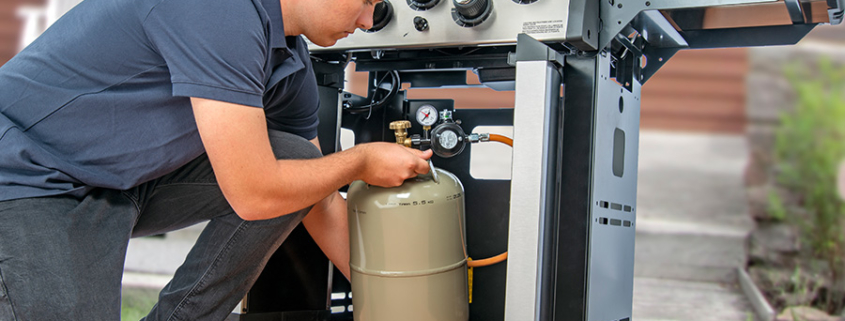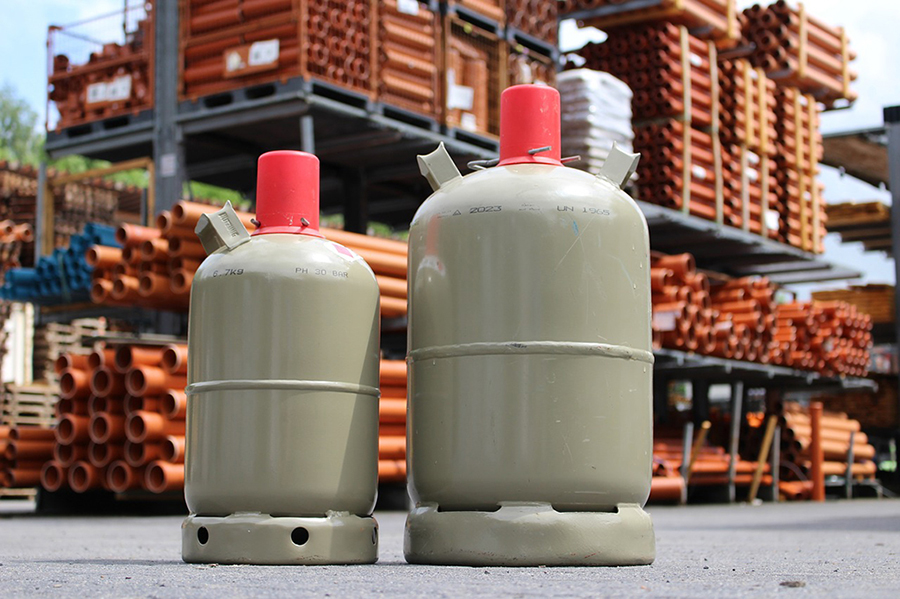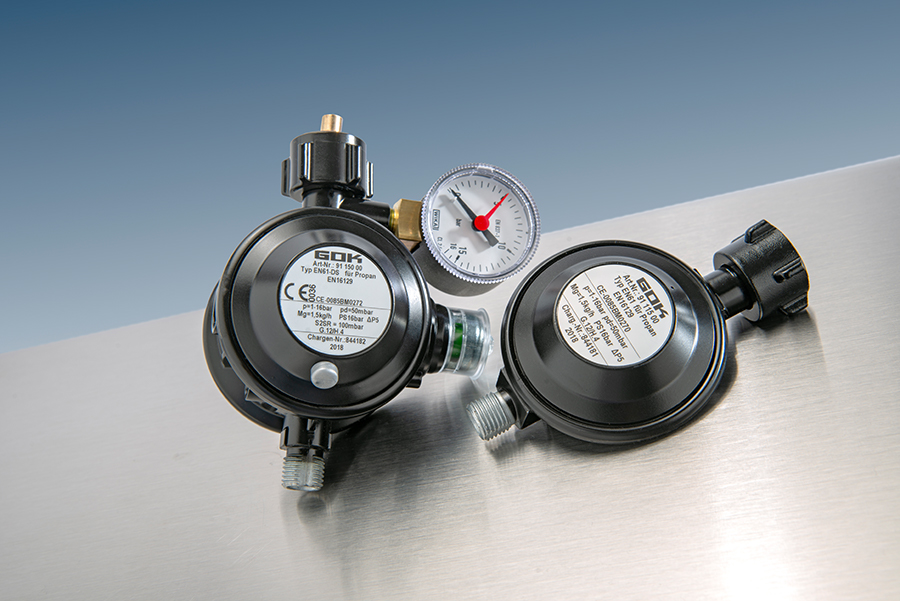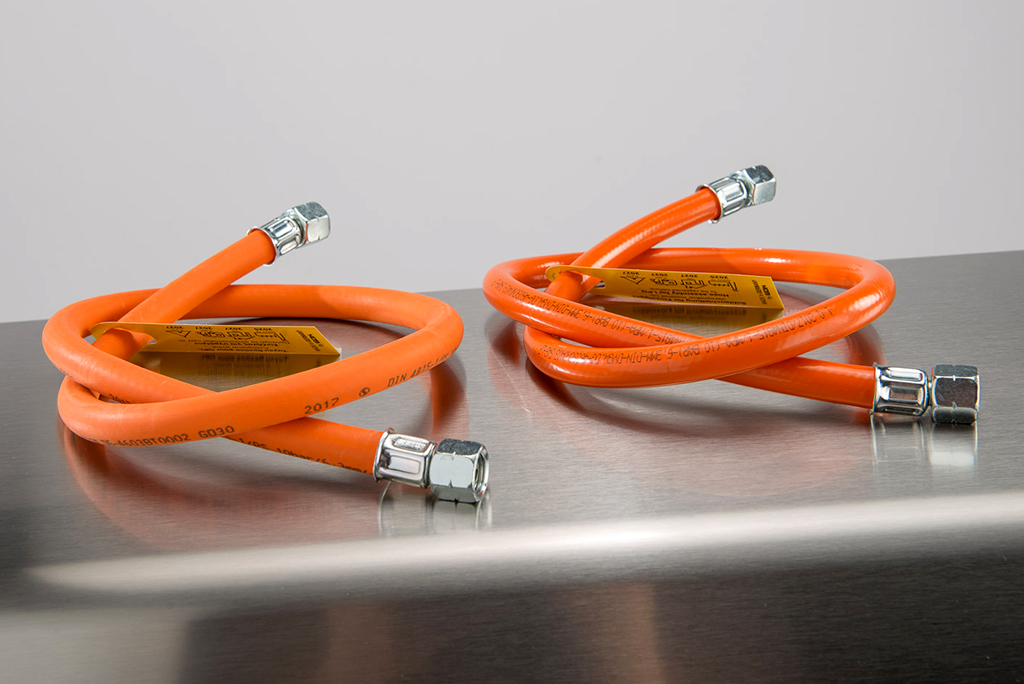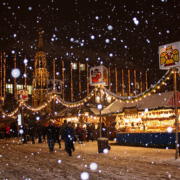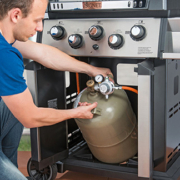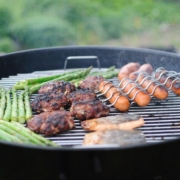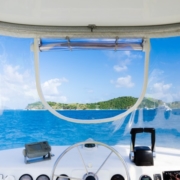What safety tips should gas barbecue beginners be aware of before, during and after start-up?
Gas barbecuing is becoming really popular and increasing numbers of people are getting involved around the world. However, the first handling of the medium liquefied petroleum gas (LPG) makes quite a few people feel uneasy. It doesn’t have to be if you know certain basic rules and handle the gas barbecue and all system components such as the gas cylinder, pressure regulator or gas hose carefully in all respects.
Brief and important information in advance
The LPG system of a gas barbecue usually always has the same basic structure: The gas cylinder supplies the energy in a compressed form. The pressure reducer (also known as a pressure regulator) lowers the uncontrolled pressure from the gas cylinder to a stable value with which the subsequent gas barbecue can work constantly well. The gas hose connects the pressure reducer to the gas barbecue.
Fit the coupling nut of the pressure reducer to the connection of the gas cylinder and fix with rotation to the left. It is sufficient if you tighten it manually first and then tighten it with the MiniTool, for example. If the pressure reducer is fixed, install the gas hose next. To do this, simply turn the coupling nut of the gas hose onto the outlet connector of the regulator and proceed the same way with the other side of the gas hose on the gas barbecue depending on the connection. As a rule, you can tighten the connections manually first and then carefully re-tighten them with an open-end wrench.
Finally: checking for leaks!

In any case, these three components are required for operating the gas barbecue: Gas cylinder, pressure reducer and gas hose.
New purchase or used purchase
If you purchase a new gas barbecue – whether from a specialist retailer on site or online – you will always receive a pressure reducer and gas hose supplied. This is a requirement for the manufacturers of gas barbecues. If someone gets a used gas barbecue, please consult the seller beforehand to find out whether they are also selling a pressure reducer and gas hose.
If these components are not included when purchasing the used one, you should request exact images and names of the pressure reducer and gas hose as a potential buyer. This will make things a lot easier at your specialist retailer if you get the right components for yourself. On our website you can also find help with the selection: https://www.gok.de/fluessiggasanlagen-freizeit/grill-bbq/.
In the following, we want to deal a little more precisely with the four key components when barbecuing with gas: Gas cylinder, pressure reducer, gas hose and gas barbecue.
Gas cylinder
There are different types of gas cylinders worldwide. The content is more or less the same for all of them when it comes to LPG. However, these are usually all similarities, as the size, diameter, filling volume and connections may differ.
If you don’t have any experience, simply talk to someone you know who already barbecues with gas, or you can get advice from the place where you can buy LPG, for example from LPG distributors or at DIY shops.
Gas cylinders with a filling weight of 5, 8 or 11 kilograms are commonly used in Germany; in other (European) countries, gas cylinders with a filling weight of up to 16 kilograms are used.
Pressure reducer
The pressure reducer, also known as a pressure regulator or a gas pressure regulator, has an important task:In all operating states, it must regulate the uncontrolled cylinder pressure to a constant level so that the barbecue can work reliably. In Germany, gas barbecues work with a working pressure of 50 mbar. In addition, pressures of 30 or 37 mbar are common abroad.
“First-time barbecue users” should of course make sure that the connection of the pressure regulator matches the one of the gas cylinder and that the working pressure specifications on the pressure regulator are identical to the information on the gas barbecue. If you buy a new barbecue, it’s a good idea to find out whether it is also designed for the target country before you make the purchase. The right pressure regulator for the respective cylinder connections is then also included. However, in the case of used purchase (mainly beyond national borders), it can become a little more complicated. In these cases, maintain intensive contact with the seller and ask about the connections or working pressure.
Here is an overview of the common connections and in which countries they are used.
GOK offers two different types of pressure regulators specifically for gas barbecues:
While the BASIC version only regulates the pressure, the PRO version has an additional safety device and a pressure gauge for pressure and leak checks.
Both pressure reducers are of course suitable for barbecuing with gas, the PRO version offers the highest degree of safety and functionality.
At the outlet, the pressure reducers usually have a so-called ¼ LH M connection. This means nothing other than the fact that it is a left-hand thread in the dimension ¼ inches. In order for the gas hose to fit to the pressure regulator, it must have a ¼ LH nut connection at the inlet, i.e. a left-hand thread with coupling nut.
By the way, the conventional connections of the LPG components are all equipped with a left-hand thread. With many “first-time barbecue users”, this can initially lead to great frustration, as everyone is used to turning to the right to fasten a connection.
You are currently viewing a placeholder content from Youtube. To access the actual content, click the button below. Please note that doing so will share data with third-party providers.
Gas hose
As with the gas cylinders, there isn’t the one gas hose that suits all barbecues and pressure regulators in all countries, unfortunately. There are different connection versions, varying lengths and materials.
The pressure regulator and hose are of course included in the purchase of a new gas barbecue, which are adapted to the installation situation. If there is neither a regulator nor a hose when purchasing the used one, it’s best for “first-time barbecue users” to ask the specialist retailer and/or seller what connection it had.
As we mentioned, the gas hoses are available in different materials, i.e. rubber and plastic. GOK offers both versions, but also has a favourite, especially when the barbecue user also reaches for their barbecue tongs and meat thermometers at low temperatures. The gas hose made of rubber is just more flexible, especially when the temperatures fall. All information and differences are available here:
What we recommend for both beginners and professionals on the gas barbecue: Especially in winter, it is best to protect the gas hoses by detaching them and storing them separately. Hungry animals can chew on the hose material at any time. This can lead to leaks both in the short and long term. It is therefore all the more important to carry out the leak check regularly and every now and then take a look “under” the barbecue at the components such as the pressure reducer and gas hose.
Replacement periods and safety tips
What many barbecue users do not know or often forget: Components such as pressure reducer and gas hose are wear parts and should be replaced at regular intervals for safety reasons! In Germany, worksheet G 612 of the German Technical and Scientific Association for Gas and Water (DVGW) applies to the operation of portable LPG leisure systems. After ten years, the replacement of, for example, pressure reducer and gas hose according to this regulation is mandatory.
To this end, it should be said that some manufacturers recommend shorter replacement cycles in order to ensure long-term reliable operation of their barbecue equipment. For this reason, barbecue users should always have a closer look at the operating manual.

In Germany, you must replace your pressure reducer and gas hose after ten years at the latest. Some manufacturers of gas barbecues recommend even shorter cycles.It’s worth taking a look at the operating manual!
Tips on the gas cylinder
Of course, as before, we mainly use the barbecue in the summer, and the following question arises especially frequently: Does it matter if the gas cylinder is standing in direct sunlight at 35 degrees? The short answer: No! The detailed answer is available in this article:
Before barbecuing, first open the gas cylinder. This takes just a few turns. If you hear the well-known hissing, the cylinder is open and ready for withdrawal. If the food is off the barbecue and the last guest has been fed, we recommend that you first stop the gas supply to the gas barbecue via its rotary control and then close the gas cylinder valve. There is now a small residual amount of gas between the regulator and the barbecue. To allow this to escape, simply open one of the rotary controllers on the gas barbecue for a short time. The gas will escape and won’t be dangerous at all in this minimum quantity.
Of course, beginners also ask themselves: How long does a gas cylinder last? According to experience, it is never the case that the flame goes out, the food is cooked, every guest is well-fed and only then does the gas cylinder run out of gas.Therefore, it doesn’t take long and most barbecue users get a reserve cylinder. But where do you store it? In the ideal case, the barbecue user has a garden house or a lockable shelter. There, the reserve cylinder can be perfectly stored.
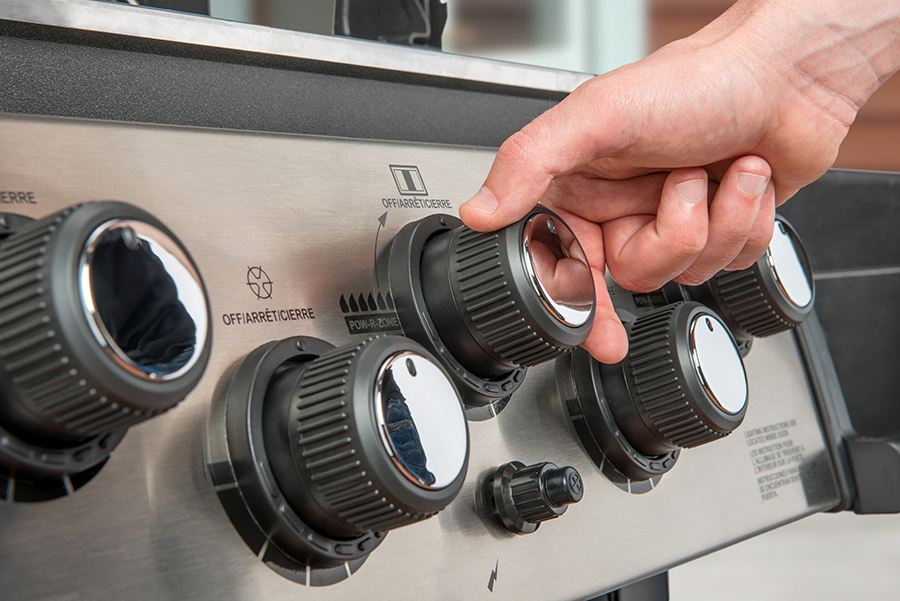
After closing the gas barbecue, open the rotary control on the gas barbecue once more briefly to allow the residual gas to escape.
Leak checks
If the unit is then fully assembled and correctly connected, there is only one more thing separating you from some barbecue fun: Please always carry out a simple leak check of the entire unit. You can see how this can be done quickly and simply here:
You are currently viewing a placeholder content from Youtube. To access the actual content, click the button below. Please note that doing so will share data with third-party providers.
If your pressure regulator has an integrated pressure gauge, you can also check the leak-tightness of the system with it. How it works:
Incidentally, this leak check should be carried out regularly before each use of the gas barbecue. In addition, worksheet G 612 of DVGW mentions a recurring test of the systems by a specialist or specialist company. The tester records the result in a test certificate, the content of which is, for example, the address of the user, type of system, pressure regulator, gas hose, gas equipment, visual inspection, leak-tightness and function checks.
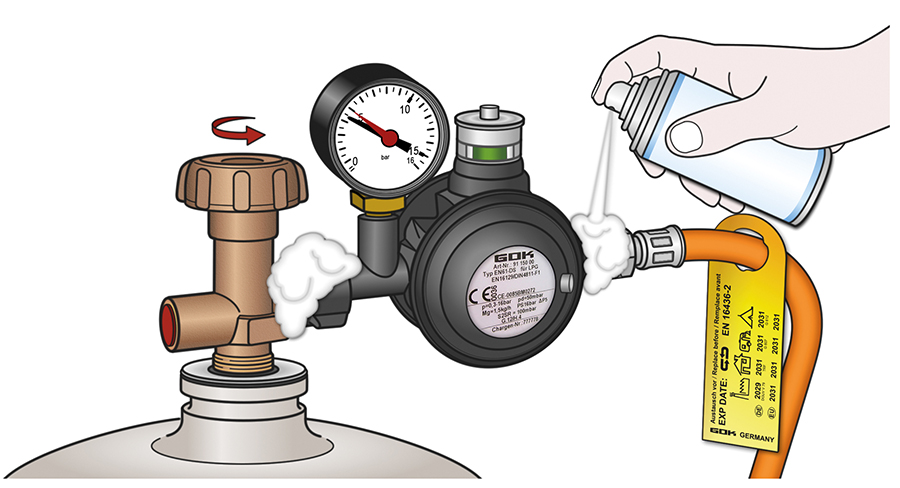
Here, the operator has both options for a quick and simple leak-tightness test: using a leak detector spray and using the pressure gauge on the pressure reducer.
Further product recommendations
In addition to the pressure reducer and gas hose, there are also other products relating to the gas system components.We will present these briefly:
- Excess flow device: Blocks the uncontrolled escape of LPG in the event of a massive leak at the gas hose and is prescribed if the gas hose is longer than 150 centimetres.
- Senso4s PLUS: This way, you can prevent the gas cylinder from suddenly becoming empty!
- Control valve: Some barbecues have too much power and it’s hard to cook at a low temperature. More information here:
- Leak detector spray: Ideal for fast leak checks.
- Locking screw regulator and regulator bracket: If you dismantle your system more often or prepare it for storage over winter, for example, you should take a look at these products.
